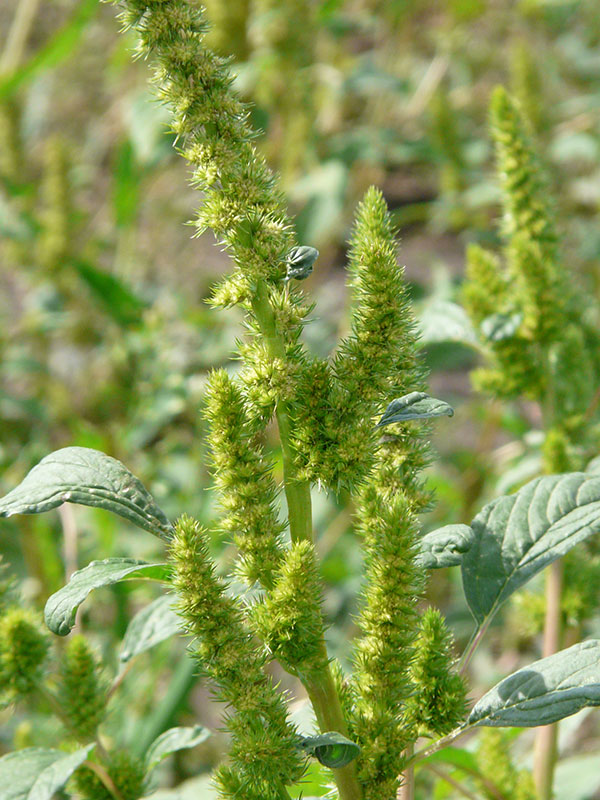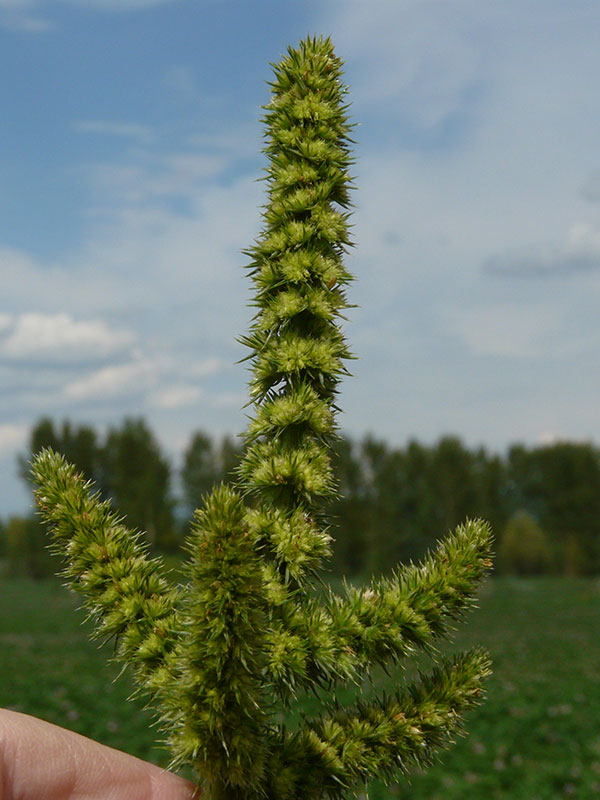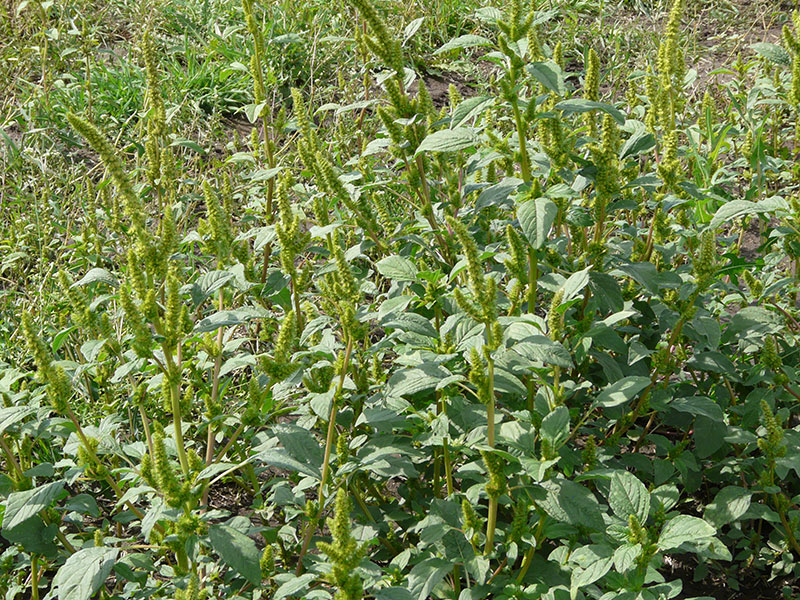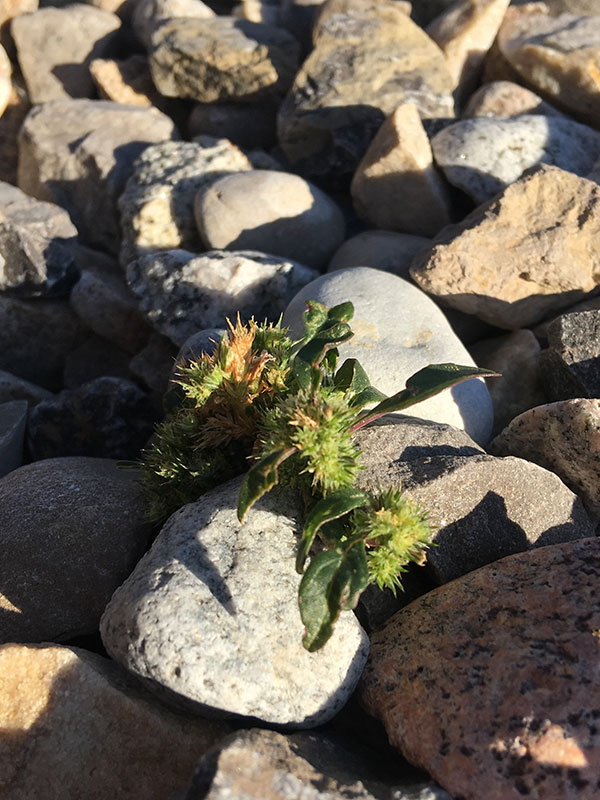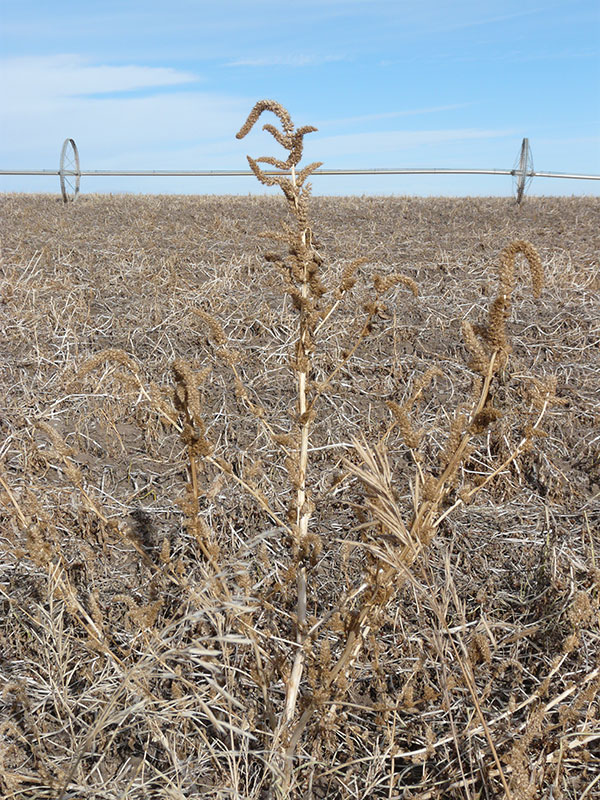Amaranthus retroflexus / pigweed
- green bottle-brush inflorescence
- accomplished weed on disturbed sites (including road & driveway cracks)
- often in gardens, farm fields (edges), roadsides
Also known as: common amaranth, redroot amaranth; rough pigweed; wild beet
It is most likely that you will find pigweed anywhere you look in a disturbed area such as your garden, your lawn, rough roadsides, the edges (and centers) of any agricultural field. Once you see the first inflorescence – like a green bottle brush – you will not be able to overlook it again. After that, you may be amazed at how small the plant can be when it flowers, not just how big it can get and how many teeny flowers it can sport.
Regardless of your opinion of the plant otherwise, you have to admit it is fairly amazing, and even (sometimes) useful. Pigweed is a highly successful weed due to its drought tolerance, its ability to gather nutrient resources efficiently, its tolerance of most soil conditions, and its relative-to-complete insensitivity to the most used herbicides. It also has highly efficient photosynthesis, due in part to its specialized biochemistry, and in part to the elegant design of its leaves. It is a prolific producer of small, easily dispersed seeds, and a self-sowing annual.
But, unlike many other accomplished but unappreciated weeds, pigweed is edible; it is usually called amaranth in that context. The genus itself is widespread throughout the world and is a primary vegetable in many places, at least partly because it doesn’t care much what kind of soil it grows in, it re-seeds itself and the seeds are not killed by winter cold. The stems work as a steamed or boiled vegetable. The leaves would be a substitute for spinach now, in salads, soups and stews, but they have even used that way for much longer than spinach… for centuries… throughout the world. Here is a recipe for Jamaican Callaloo Soup the main ingredient for which is amaranth leaves and stems. The grains (seeds) were a staple crop for the Aztecs and Incas.
So this might not be the wildflower that will make you shout for joy and call your friends back east, but you can at least be slightly appreciative as you pull it up.
| Color | |
|---|---|
| Family | |
| Blossom size | |
| Inflorescence size | |
| Inflorescence type | |
| When? | |
| Where? |
